Views: 371
 The entrance to the courtyard in which the Judenrat (Jewish Council) was located during WWII in the Large Jewish Ghetto in Vilnius
The entrance to the courtyard in which the Judenrat (Jewish Council) was located during WWII in the Large Jewish Ghetto in Vilnius
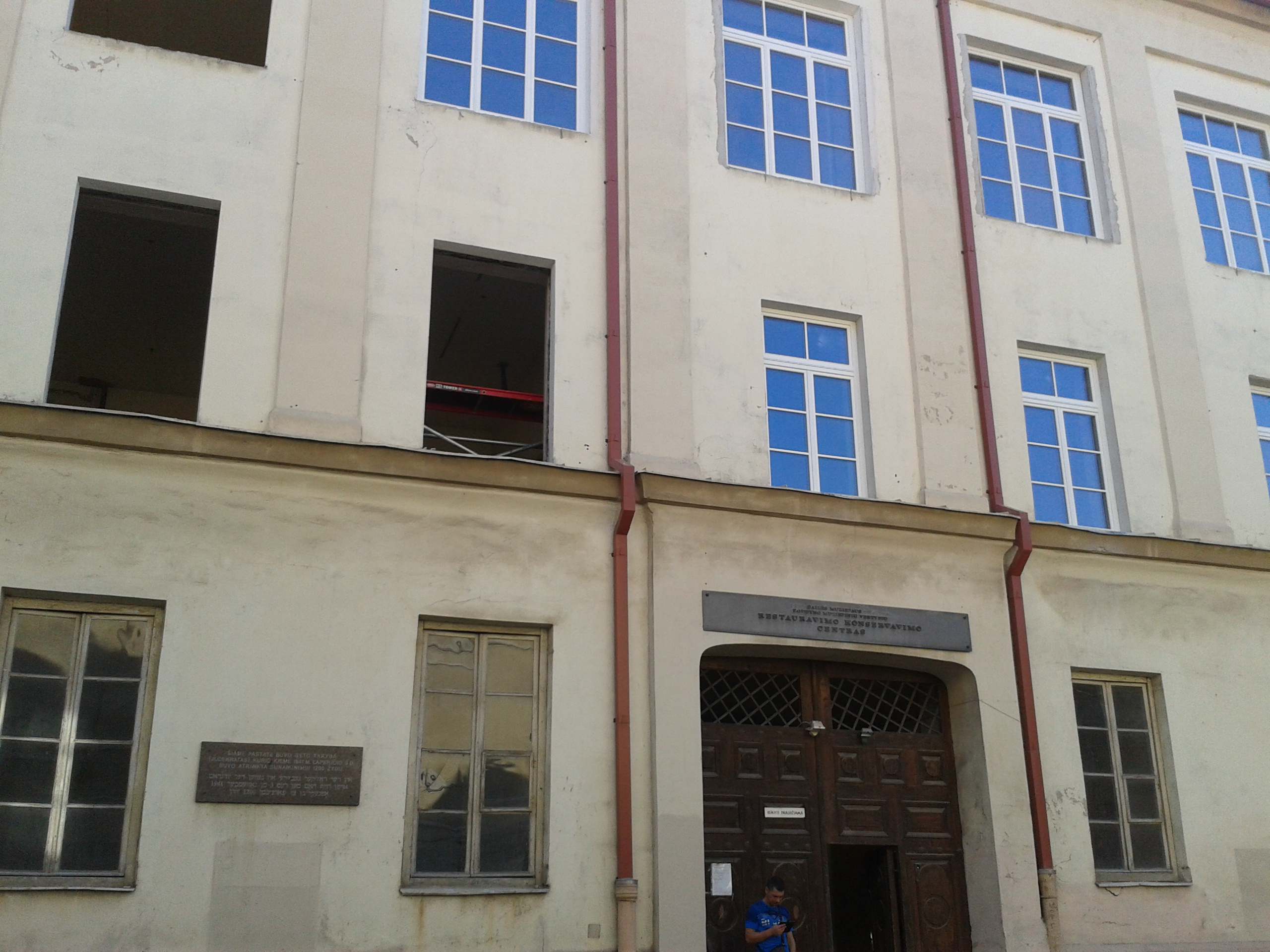 The building of the Judenrat which functioned from September 1941 to September 1943 within the Large Jewish Ghetto that was formed around Rūdninkų Square
The building of the Judenrat which functioned from September 1941 to September 1943 within the Large Jewish Ghetto that was formed around Rūdninkų Square
 Hebrew inscription above the windows on a former Jewish shop
Hebrew inscription above the windows on a former Jewish shop
All photos are copyrighted by Vladislav B. Sotirovic
© Vladislav B. Sotirovic 2019
RELATED POSTS
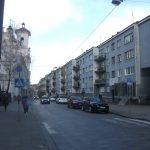
The Górecki estate in Dominikonų St. 15 is a two-storey Gothic house. It was built on this site in the late 15th or early 16th century. In 1649 it was bought by Vilnius UniversityZawisha estate is known since late 16th or early 17th century. It was renovated in the late 18th century. The façade is strictly symmetrical, done in the style of early Classicism. Renaissance vaults have survivedDominikonų Street is dominated by the Roman Catholic Church of the Holy Spirit and the Dominican Monastery (1501)All photos are copyrighted by Vladislav B. Sotirovic© Vladislav B. Sotirovic 2020
Continue Reading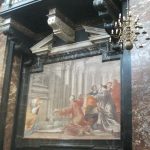
The silver cofin of St. Casimir is under a plaster canopy accompanied by relics. Under the cofin is a miraculous painting in a silver frame, with a silver statue with the saint's attributes placed on the cofin. The relief features a very rare depiction of a smiling Blessed Virgin Mary with Baby JesusIn the chapel there are eight silver-plated wooden Baroque statues of the Kings and Grand Dukes of Poland and Lithuania from the Gediminid and Jagiellon dynasties from the 17th centuryThree-Handed Image of St. Casimir c. 1520. This painting is considered to be miraculous. In 1743 the painting was put into a silver, gold-plated framing. St. Casimir is holding lilies and a rosary, which are his symbolsAll photos are copyrighted by Vladislav B. Sotirovic© Vladislav B. Sotirovic 2020
Continue Reading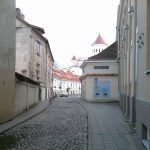
The Grand Duke of Lithuania Sigismund (1432-1440), who ruled briefly after the death of his brother Vytautas the Great (died in 1430), granted equal rights to the Russian Orthodox believers living in the capital-city of Vilnius - before long they came to constitute one half of the members of the city board and guild elders In the Middle Ages Vilnius (today Old Town) was increasingly multy-national as it was the case with the Grand Duchy of Lithuania as well. The city was, in fact, divided into four quarters according to the ethnic and religious belonging of its citizens: the German Quarter, the Russian Quarter, the Jewish Quarter, and the Tartar Quarter. Each of these city quarters had the main street named according to the ethnic belonging of their inhabitantsThe Russian Street in Old Town of Vilnius ends with the Russian Orthodox Cathedral (Sobor) of the Dormition of the Holy Mother ...
Continue Reading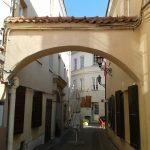
A building of Jewish Center of Culture and Information in the area of the Large Jewish Ghetto in 1941-1943. In this house a famous Vilnius resident Dr. Tzemach Shabad livedTzemach Shabad (1864-1935) was not only a good doctor, but a societal and community figure, and humanist as well. A monument (in 2007 erected) to him on the territory of WWII Large Jewish GhettoA plaque of a plan of the Jewish Ghetto in 1941-1943. There were Small and Large Jewish Ghettos existing from September 6th, 1941 to September 23rd, 1943. Today, September 23rd is the National Memorial Day for the Holocaust/Genocide of the Lithuanian Jews All photos are copyrighted by Vladislav B. Sotirovic© Vladislav B. Sotirovic 2019
Continue Reading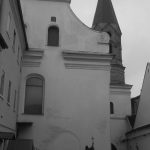
This is the first Evangelical Lutheran Church (Kirche) built-in Vilnius in 1555 on the initiative of the Chancellor of the Grand Duchy of Lithuania Nicholas Radziwiłł the Black. In front of the church, there is a monument erected to Martin Luther The church was rebuilt in 1662 and substantially reconstructed in 1738-1744. In 1944 it was closed down. In 1993 it was returned to the parishioners and renovatedThe church has a single nave and an original pentagonal shape. Its magnificent high altar was designed by German Protestant architect Jan (Johan) Krzysztof GlaubitzAll photos are copyrighted by Vladislav B. Sotirovic© Vladislav B. Sotirovic 2019
Continue Reading
The Augustines established themselves on this site in Vilnius Old Town after 1661. The monastery date from the late 18th centuryIn 1833-1842 the monastery housed the Vilnius Spiritual Academy. In 1859 it was converted into a Russian Orthodox Church of St. AndrewIn 1918 the church was returned to the Roman Catholics and renovated. After WWII the interior was destroyed during the installation of a ferroconcrete ceiling; the church was used as a warehouse in the Soviet timeAll photos are copyrighted by Vladislav B. Sotirovic© Vladislav B. Sotirovic 2019
Continue Reading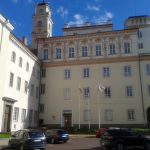
The north wing of the Library Courtyard with the building of the Faculty of History of the Vilnius UniversityThe entrance to the Central Library of the Vilnius University is decorated by the memorial door in 2001 for the 450 year anniversary of the first book printed in the Lithuanian language (1547)The main building with the main entrance to the Vilnius University with the Rector Office seen from the Library CourtyardAll photos are copyrighted by Vladislav B. Sotirovic© Vladislav B. Sotirovic 2020
Continue Reading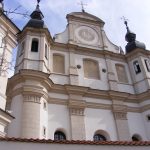
The church was financed by Grand Chancellor of the Grand Duchy of Lithuania, Grand Hetman, and Vilnius Voivode - Lew Sapieha, who had converted to Roman Catholicism from Calvinism. He was one of the most influential nobles in the Grand Duchy of LithuaniaLew Sapieha gave the church and surrounding buildings for the Bernardine nuns to have a convent and built a Sapieha family mausoleum in the churchThe convent was also a place where the daughters of rich aristocrats were taught. Today, the Church Heritage Museum operates in the churchAll photos are copyrighted by Vladislav B. Sotirovic© Vladislav B. Sotirovic 2019
Continue Reading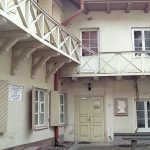
In this house, belonging at the time to a university professor, Adam Mickiewicz stayed for a short period in 1822 and completed the poem "Gražina"It is small museum of three rooms but it is currently being expended. Among the exhibits are several portraits of Adam Mickiewicz and some period furniture, including a table and chair from Kaunas and a chair from Paris that the poet himself usedThe exhibition includes among the many volumes of his work in foreign languages, for instance, a Persian translation of his "Sonnets from the Crimea" All photos are copyrighted by Vladislav B. Sotirovic© Vladislav B. Sotirovic 2020
Continue Reading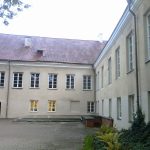
Earlier in this courtyard was an artillery school. The Rector of the Vilnius University S. Malewski as well as lived in the building of this courtyardA poet Adam Mickiewicz spent much time with his son in their house in 1818-1819. As the first-year student, he lived in one of those buildings. Later, it became a gathering place of the PhilomatsThe courtyard is surrounded by two-storey buildings. A Gothic façade of one of them is facing Pilies StreetAll photos are copyrighted by Vladislav B. Sotirovic© Vladislav B. Sotirovic 2023
Continue Reading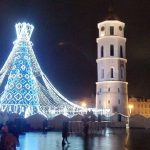
Christmas Tree decoration at the Cathedral Basilica Square in Vilnius. The belfry is seen in the backgroundChristmas decoration in front of the principal building of the castle complex in Vilnius Old Town - Cathedral BasilicaCathedral Basilica of Vilnius is erected on the place of the pagan altar with a ceasred fire to the pagan god Perkūnas (god of Thunder)All photos are copyrighted by Vladislav B. Sotirovic© Vladislav B. Sotirovic 2019
Continue Reading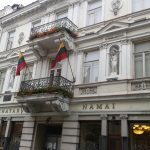
A museum operates today in the House of Signatories, along with a memorial hall where the act of Lithuania's independence was signed on February 16th, 1918 when Lithuania was under the German occupation and administration during WWI (1915-1918)The first floor of the house with statues symbolizing agriculture and fishing is very decorative. Niches on the second floor hold two male bustsHaving acquired this house in the late 19th century, Karol Sztral reconstructed it according to architect Aleksei Polozov's project in the style of HistoricismAll photos are copyrighted by Vladislav B. Sotirovic© Vladislav B. Sotirovic 2019
Continue Reading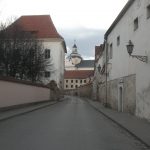
At the Church of the Holy Spirit, a Dominican monastery was established on St. Ignatius Street in 1501. In the 19th century, the buildings of the monastery were converted into a prison The entrance from St. Ignatius Street to the former old Jesuit Novitiate: arranged around three courtyards. It is the same age as the nearby Church of St. IgnatiusThe Church of St. Ignatius was erected from 1622 to 1647 being devastated by fires in 1748-1750. It suffered during the war against Russia from 1655 to 1661. The porch was added in the 19th century.All photos are copyrighted by Vladislav B. Sotirovic© Vladislav B. Sotirovic 2020
Continue Reading
The life and work of Dr. Jurgis and Marija Šlapelis reflects the life of the region of Vilnius from the second half of the 19th century to 1940. Both of them have been cultural figures in Lithuania. Marija was actress. They published Lithuanian books that were banned at that timeDr. Jurgis and Marija Šlapelis owned the only Lithuanian language bookstore in Vilnius during 1906-1949. The Šlapelis family bought the house in 1926. Before, it was a goldsmith's workshops, and later housed a small holet called the Hotel de Philadelphie, and a wine shop The building is an example of the 17-th century architecture. Dr. Jurgis died in 1941, and Marija in 1977 at the age of 97. After WWII, the house was nationalised, and, therefore, Marija Šlapelis was forced to live in two small rooms upstairs, with the only access to them through another person's quarters. Marija stipulated in her ...
Continue Reading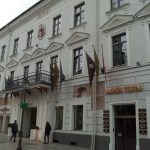
Polish King Jan Sobieski, Russian Emperor Alexander I and French Emperor Napoleon I visited the mansion on various occasions. The building was reconstructed in 1839-1841. The present façade is ClassicalA Florentine artist Michelangelo Palloni, was invited from Italy in 1674 to work at Pažaislis monastery and church near Kaunas, and Mykolas Kazimieras Pacas then commissioned him to paint frescoes for of this estate.Unfortunately, none of the original interior, which also included rich stucco work, remainsAll photos are copyrighted by Vladislav B. Sotirovic© Vladislav B. Sotirovic 2022
Continue Reading
The church is inconspicuous from the street, as its façade does not face the streetThe 51 meter-tall dome can be seen from seven Old Town streetsThe Dominican Church of the Holy Spirit is one of the most magnificent churches in Vilnius. It is an excellent monument of high and late Baroque All photos are copyrighted by Vladislav B. Sotirovic© Vladislav B. Sotirovic 2018
Continue Reading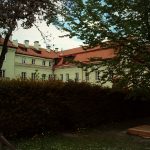
A small doorway in a plain building at Pilies (Castle) Street leads through a vaulted passage into a large yard. The yard was the original place of the Botanical Garden of the Vilnius University. It was founded by a French botanist, Jean Gilibert, in 1782The Botanical Garden remained in this yard for 10 years when it was transferred to Sereikiškių Park, and as well as provided accommodation for the university professors. Before becoming the Botanic Garden, the buildings around had been a college for noblemen. After the university was closed in the mid-19th century, the buildings were used by the Medical AcademyThe yard is the best and most probably the single place in Vilnius from where to admire the spectacularly decorated top of the apse of the Church of St. John's (the church in the grand courtyard of the University of Vilnius)All photos are copyrighted by Vladislav B. Sotirovic© Vladislav ...
Continue Reading
The Jewish Str. in Vilnius was known as hosted the Great Synagogue of Vilnius, the Jewish (Strashun) Library of Vilnius, the Schulhoyf yard, the Gaon House and the Gaon Synagogue among other buildings Gaon Str. with the Stikliai (Glass) Hotel on the corner of the Glass Square where the glass products have been sold since the mid-16th centuryAt the entrance to Gaon Str. in 1941 it was the gate to the Small Jewish Ghetto which existed from September 6th to October 29, 1941. The Small Jewish Ghetto had around 11.000 inhabitantsAll photos are copyrighted by Vladislav B. Sotirovic© Vladislav B. Sotirovic 2019
Continue Reading
Wonderful panoramic view can be seen from the roof (platform) of Gediminas Tower (Upper Castle Tower)Despite wars and destructions, the architectural ensemble of Vilnius Old Town remains unique. Baroque domes and towers of Vilnius Old Town coexist with an irregular medieval city plan Vilnius Old Town is lacking German or Scandinavian features, rather reminiscent of Prague or Rome, Vilnius differs greatly from the other Baltic capitalsAll photos are copyrighted by Vladislav B. Sotirovic© Vladislav B. Sotirovic 2019
Continue Reading
Vilnius University was the first observatory center in Eastern Europe and the 4th in the worldWhite Hall now houses unique astronomical instruments and a reading roomThe narrow staircase leads to the observatory tower, which reveals a panorama of the Vilnius Old TownAll photos are copyrighted by Vladislav B. Sotirovic© Vladislav B. Sotirovic 2023
Continue ReadingDominikonų Street in Vilnius
Chapel of St. Casimir (interior)
The Russian Street in Vilnius
Jewish Quarter (I)
Evangelical Lutheran Church
Church of Blessed Mary the Comforter and the Augustine Monastery
The Library Courtyard of the Vilnius University
Church of St. Michael the Archangel
The Adam Mickiewicz Museum
Adam Mickiewicz Courtyard of the Vilnius University
Vilnius Christmas Tree
The House of Signatories (Karol Sztral’s House)
St. Ignatius Street
The Šlapelis House Museum
The Pac Mansion
Church of the Holy Spirit & Former Dominican Monastery (Exterior)
Courtyard of the Medical Collegium (2)
The Jewish Street and Gaon Street in the Old Town of Vilnius
Vilnius Old Town Panoramic View
Astronomic Instruments at the White Hall at Vilnius University



